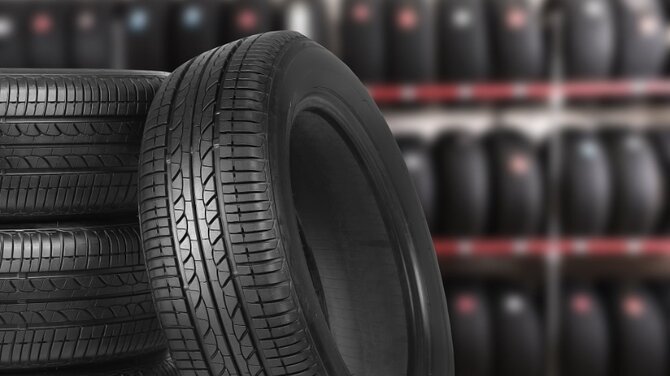What Should My Tyre Pressure Be? Safe Driving Tips
Discover the ideal tyre pressure for safe driving. Learn how to maintain the right pressure for your tyres, including the Advan ST V802 model, and avoid tyre risks.

Maintaining the correct tyre pressure is critical for your vehicle’s safety, fuel efficiency, and tyre lifespan. Whether you’re cruising through city streets or taking a long road trip, having the proper air pressure in your tyres can make a significant difference.
If you've ever asked yourself, "What should my tyre pressure be?", this guide will walk you through the key factors to consider and provide helpful tips to keep your tyres in optimal condition.
Why Tyre Pressure Matters
Tyre pressure is one of the most important aspects of vehicle maintenance. Driving on under-inflated or over-inflated tyres can lead to various problems, including poor handling, increased braking distance, and uneven tyre wear. It can also negatively affect fuel efficiency and make your car less safe in emergencies. The right tyre pressure ensures:
- Better fuel economy
- Improved vehicle handling and control
- Increased tyre life
- Reduced risk of accidents
For drivers using Advan ST V802 tyres, keeping them at the right pressure is particularly important because these high-performance tyres are designed to deliver maximum performance and longevity when inflated correctly.
How to Find the Correct Tyre Pressure
The correct tyre pressure varies depending on your vehicle’s make and model. Most vehicles have a recommended tyre pressure listed on a sticker inside the driver’s side door or in the owner’s manual. In general, the pressure is measured in pounds per square inch (PSI).
So, what should my tyre pressure be? As a rule of thumb, most passenger vehicles require between 30 and 35 PSI. However, performance tyres like the Advan ST V802 may have specific requirements to ensure they perform optimally. Always refer to your vehicle’s manual and the tyre manufacturer’s recommendations.
Factors That Affect Tyre Pressure
Tyre pressure isn’t static—it changes with conditions such as:
- Temperature: Tyre pressure drops as the temperature decreases and rises in hot conditions. For every 10°F change in temperature, tyre pressure can change by about 1 PSI.
- Load: If you’re carrying heavy cargo or passengers, your tyres may need additional air pressure to support the extra weight.
- Altitude: Higher altitudes can cause slight fluctuations in tyre pressure.
How to Check and Adjust Tyre Pressure
Here’s a step-by-step guide to checking and adjusting your tyre pressure:
-
Get a reliable tyre pressure gauge: Digital tyre gauges are more accurate and easier to read compared to analogue ones.
-
Check the pressure when tyres are cold: Tyres heat up as you drive, which can lead to an inaccurate reading. It’s best to check tyre pressure when your vehicle has been parked for a few hours or first thing in the morning.
-
Find the recommended PSI: Locate your vehicle’s recommended tyre pressure (either in the manual or on the sticker in the door).
-
Measure the current pressure: Remove the valve cap from the tyre and press the gauge onto the valve stem. Note the pressure reading.
-
Inflate or deflate as needed: If the pressure is too low, add air until it reaches the recommended PSI. If the pressure is too high, release some air by pressing the valve stem until it lowers to the correct level.
-
Repeat for all tyres, including the spare: Don’t forget to check your spare tyre, especially if you plan to travel long distances.
The Risks of Incorrect Tyre Pressure
Driving on tyres with incorrect pressure can lead to several dangers. Here’s why maintaining the right tyre pressure is essential:
-
Under-inflation: Tyres that are under-inflated create more surface area contact with the road, leading to increased friction. This can cause the tyres to overheat, increasing the risk of blowouts and premature wear.
-
Over-inflation: Over-inflated tyres have a reduced contact patch, leading to less grip on the road. This affects your vehicle’s handling and makes your tyres more prone to damage when hitting potholes or curbs.
Maintaining Optimal Tyre Pressure for Advan ST V802
The Advan ST V802 is a popular choice for drivers seeking superior handling and performance, particularly for SUVs and high-performance vehicles. These tyres require specific care to ensure they remain in top condition.
For those who often ask, "What should my tyre pressure be for a high-performance tyre like the Advan ST V802?", the answer lies in balancing manufacturer recommendations with regular checks, especially before long drives. High-performance tyres like these benefit from precise inflation to maintain traction, longevity, and fuel efficiency.
Where to Check Your Tyres
If you're unsure about your tyre pressure or need assistance, a quick visit to a tyre shop near me can help. Many tyre shops offer free tyre pressure checks, and some even provide mobile tyre services for added convenience. If you drive on Advan ST V802 tyres, visiting a professional to ensure the correct tyre pressure is maintained can prevent long-term issues and keep your car running smoothly.
Final Thoughts
So, what should my tyre pressure be? The answer depends on your vehicle and the type of tyres you use. Keeping an eye on your tyre pressure ensures your safety, boosts performance, and can even save you money on fuel. Tyres like the Advan ST V802 need extra attention to stay in top shape, so regular checks are a must.
What's Your Reaction?















